Service hotline
+86 0755-83044319
release time:2022-08-25Author source:Song ShiqiangBrowse:7733
In 2016, Professor Wei Dazhi of Shenzhen University and Qin Shuo, a well-known media person, had a furious debate and compare over the economy trend of Shanghai and Shenzhen. Their viewpoints and conclusions are so different! I am Song Shiqiang from Kinghelm (www.kinghelm.net) and Slkor (www.slkoric.com), one of the top 50 punster writers in Huaqiangbei Shenzhen, I choose to support Professor Wei. To start with, I will analyze what Shenzhen is ahead of Beijing and Shanghai from the perspective of a Huaqiangbei economist. As Guangzhou is the administrative leader city of Guangdong province, I prefer not to commend it. My conclusion is that Shenzhen will be the top city with the best economic development in China in the foreseeable future.
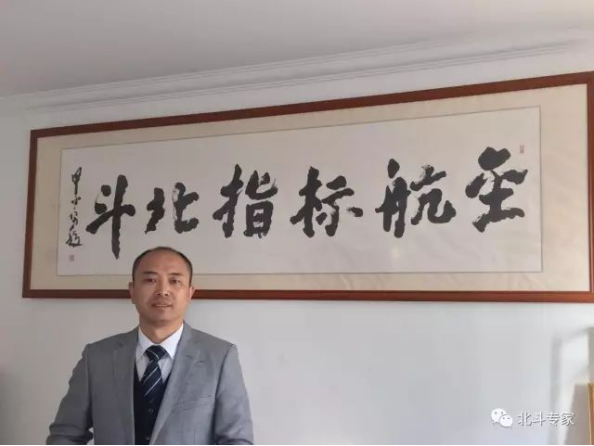
Song Shiqiang, General Manager of Kinghelm and Slkor
I. Efficiency
"Time is money and efficiency is life" was first raised by Shekou Industrial Zone in Shenzhen. "Shenzhen Speed" is the core spirit of the city and the key competitiveness of Shenzhen. Next I will discuss these base on three factors of value theory, etc. land, labor, capital; which was proposed by the French economist Say Jean Baptiste.
① Efficiency of land utilization
In business, there is a performance index called "area-effectiveness", which means the retail sales per unit area. For example, Wanjia department store in Huaqiangbei once covered an area of 3,000 square meters, and its sales amount reached 3 million yuan a day, which was the highest area-effectiveness among the same style shopping malls in the world! As to the urban land efficiency, I recommend GDP output per square kilometer. Shenzhen covers an area of 1,997 square kilometers. In 2016, its GDP was 1.94 trillion yuan, and the area-effectiveness index was 978 million per square kilometer. Beijing covers an area of about 16,808 square kilometers, with GDP of 2.49 trillion yuan and the area-effectiveness was 148 million per square kilometer. Shanghai covers an area of about 6340.5 square kilometers, with GDP of 2.74 trillion yuan and the area-effectiveness was 430 million yuan per square kilometer. Thus, Shenzhen's land efficiency is on the top in China (Please check the chart below).
At present, the land supply restricts the development of Shenzhen, and it also forces Shenzhen to innovate and transform, which has a certain positive significance, but also causes the industry hollowing of Shenzhen and the loss of the supporting manufacturing industry chain. Land is the carrier of social and economic activities, Shenzhen's high-speed healthy developments rely on more land space. Therefore I’m here to strongly appeal that Tangxia, Huangjiang, Fenggang and other surrounding towns in Dongguan City and the western part of Huizhou City should be assigned to Shenzhen, it will definitely strengthen the economic development of Shenzhen and also China.
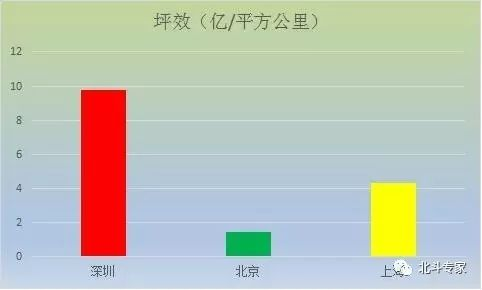
Comparison of land efficiency between Shenzhen, Beijing and Shanghai in 2016
②Labor efficiency
Shenzhen people are well known for their fast pace and high efficiency. First, Shenzhen is a place with the largest proportion of small and medium-sized private enterprises. For example, there are more than 60,000 enterprises (including 600 above -scale enterprises) and more than 40,000 individual businesses in Huaqiangbei. Their information feedback and decision-making process are simple and fast. Second, Shenzhen does not have a legacy of unsuitable rules and regulations, and there is almost no bureaucratism. Shenzhen practices the ruling model of small government and big citizens, the proportion of government employees is the lowest in China. The government administrates the city by the correspondent laws and respects the market rules, and plays the role of night watchman and service provider. Less government intervention accelerates Shenzhen's booming economy. Also, Shenzhen has no financial burden left over from its history, and the social bear of residents, such as pension and retired workers, is not big. These will definitely help the city’s development.

Song Shiqiang, General Manager of Kinghelm and Slkor
The office building of Huawei is opposite to its rival, the employees of the opposite company enjoy relax eating, drinking, afternoon tea and long annual leave, while the employees of Huawei work overtime and even overnight every day, soon Huawei left its rivals behind and the rival company is bankrupt. In places like Huaqiangbei, Science Park and Shenzhen Bay, many office buildings are brightly lit at night. Small business owners in Shenzhen are basically "5+2" and "day and night", even work more than 100 hours a week! When project deliveries are urgent and technical breakthroughs are needed, some people even work and live in the company for a week! And of course, I’m also one of them!
"Wealth is the accumulation of disciplined working ", Huawei's "all-night" work, the "bright lights" of the Science Park, "5+2" of Shenzhen elites, and our colleagues in Kinghelm (www.kinghelm.net) and Slkor (www.slkoric.com) work overtime, all are the footnotes of this principle . The increasing work time and intensity under the same conditions is a comparative advantage of efficiency and cost, which is very considerable over time.
③Capital efficiency
Mr. Yuan Geng, founder of the SheKou industrial zone, had been promoting the principle of "Time is money, Efficiency is life", which was originated from his own experience. One Friday afternoon, Mr. Yuan wrote a check bear more than twenty million to a Hong Kong bank, and for politeness, he invited people from Hong Kong to dinner out, but they rejected and got back to Hong Kong quickly on the same day. The reason is that if receipt was made on next Monday, they would lose the interest income of weekends. Money has its time cost and it needs efficiency, these impressed Mr. Yuan very much before he promoted this principle. Shenzhen's economic structure is based on small and medium-sized private enterprises with less amount of capitals, they must make a quick turnover. A female boss in Huaqiangbei once told me that the millions in her account should be paid out in one day as quick as possible, so that she can make bigger business.
The proportion of central and large state-owned enterprises in Beijing and Shanghai is very big, and their accounts have stagnant funds with low utilization and turnover rates, and these prove the theory of “the tragedy of the commons” promoted by a famous Chinese economist Xu XiaoNian . In 2015, the outstanding of deposits of financial institutions in Beijing reached 12.86 trillion yuan, Shanghai reached 10.38 trillion yuan and Shenzhen reached 5.78 trillion yuan.
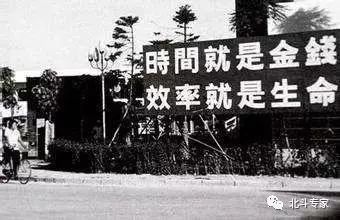
II. Economic quality
In terms of the total GDP, there is still a gap between Shenzhen, Beijing and Shanghai. Let's analyze several indicators of the economic quality. In 2014, the GDP growth rate of Beijing was 7.3%, 7% for Shanghai and 8.8% for Shenzhen. In 2015, it was 6.9% in Beijing, 6.9% for Shanghai and 8.9% for Shenzhen. In 2016, it was 6.7% in Beijing, 6.8% for Shanghai and 9.0% for Shenzhen. Considering the current GDP scale and growth trend (see the chart below), it won’t be long before Shenzhen overtakes Beijing and Shanghai!
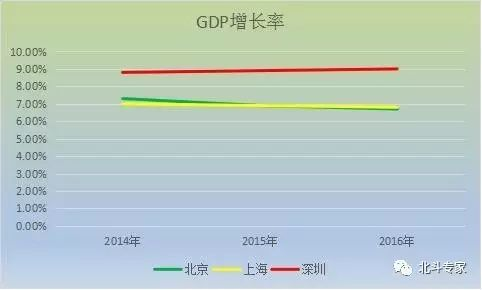
The GDP growth rate of Beijing, Shenzhen and Shanghai
Shenzhen's per capita GDP also ranked first in China, reaching 167,000 yuan (equal as 25,200 U.S.D.) in 2016, continuing to rank first among mainland cities which are at or above the sub-provincial level, and about 1.5 times that of Shanghai (102,000 yuan) and Beijing (106,000 yuan). What a surprise! In 2016, Shenzhen's total export volume reached 1,568.04 billion yuan, ranking first among mainland cities for 24 consecutive years. Enterprises in Shenzhen have completed the transformation from low-cost competition to intellectual input. The proportion of high-value-added and high-tech products from Huawei, ZTE, DJI, Hainengda, Mindray and other companies has gradually replaced the export of labor-intensive products.
Mr. Song from Kinghelm (www.kinghelm.net) and Slkor (www.slkoric.com) believes that the economic advantage of Beijing and Shanghai lies in the total quantity and stock, while that of Shenzhen lies in the structure and increment. The GDP proportion of central and large state-owned enterprises in Beijing and Shanghai is very large by means of monopoly and original location advantages. Although they are large in scale, they fail to drive upstream and downstream enterprises, and they are not effective and innovative in the market without policy protection and sufficient competition. Shenzhen's structural advantages are reflected in the number of private enterprises and average industrial development, private enterprises are the most dynamic and innovative! Private enterprises account for 90% in Shenzhen, 30% in Shanghai and even less in Beijing.
Let's look at the manufacturing industry proportion. Manufacturing industry makes the largest contribution to the progress of society and city, the manufacturing proportion is less than 20% in terms of Beijing's contribution to GDP. The financial service industry accounts for a large proportion in Beijing because of political and economic reasons, but the financial service industry does not have the core competitiveness. Shanghai’s manufacturing proportion accounts for 30 percent of the total. Shanghai has the foundation of old manufacturing industries, but the transformation of old state-owned enterprises is difficult and lack of innovation. Shenzhen’s manufacturing industry proportion accounts for nearly 40 percent (exactly 39.5%). Apart from the leading enterprises in various industrial fields such as Huawei, Tencent, ZTE, BYD, Foxconn, DJI, Mindray, and Dazu Laser, there are lots of high-tech industries such as communications, drones, new materials, 3D display, intelligent manufacturing, and new energy vehicles. And there are also surrounding enterprises supporting the industrial chain, such enterprises have little dependence on environmental damage and resources and they can develop sustainably and healthily. Huaqiangbei in Shenzhen is now the core of the electronic hardware supply chain, and it will be the node of the ecological chain of information and digital hardware. There are a lot of platform software enterprises in Shenzhen such as Huawei Harmony, Tencent, Kingdee and Landray, on which many small and medium-sized enterprises can grow together with the industry leadership and dominance.
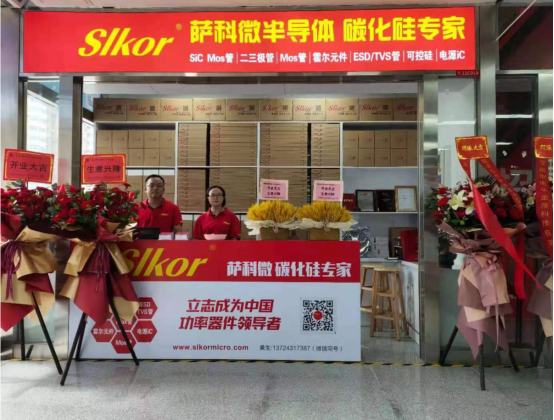
Slkor’s flagship store in Huaqiangbei
Huaqiangbei Shenzhen is China's largest electronic components distribution center, and it has been awarded the title of "The First Electronics Street in China" by China Electronics Chamber of Commerce. Like a siphon tube, the model of “the shop in front and the factory in the back” in Huaqiangbei attracts more and more businessmen. For example, Slkor’s research, development, and products manufacture are based in South Korea, while Slkor’s flagship store is in Huaqiangbei. The spillover effect of Huaqiangbei is the output of talents, ideas, role models and culture, which is also carried forward outside geographical Huaqiangbei. Ma Huateng's Tencent and WeChat, Cai Huabo's Longsys and Lexar, and Song Shiqiang's Kinghelm (www.kinghelm.net) and Slkor (www.slkoric.com), all left their legends in Huaqiangbei.
III. City innovation
Innovation, representing the development of science and technology as well as the progress of production organization mode, is the driving force of urban development. The economist Peter Thiel (author of the best-selling book "Zero to One"), who talks about the "Zero to One" phase. Most of the rest of the world is concerned with just going from 1 to N, that is how to copy and replicate the existing models, whereas the progress of the world needs to go from 0 to 1, and new possibilities must be created.
Shenzhen has an innovative and encourage environment. There are a large number of small and medium-sized private enterprises in Shenzhen. They are the most innovative entities. Their micro innovations accumulated over time, and greatly drive the development of the city. Shenzhen is a city of migrants, and the continuous increasing migrants also bring the competition, innovation and development. Shenzhen is based on the hardworking spirit of Cantonese, combining with Hunan people's tradition of endurance and toughness, and adding Sichuan and Chongqing people's solidarity character, all of these have made up the innovative spirit of Shenzhen!
Because of the social system, it is difficult for Beijing to make internal innovation, and their people's thinking tend to be conservative and lack of innovation. Shanghai's administration is the best in China, which also reflects the theory of "herd effect". With strong and shrewd leadership, enterprises and ordinary people do things according to the routine under the guidance and planning, and they are unlikely to break through the original framework. In addition, Shanghai people's petty bourgeois culture also makes them not dare to adventure. Mr. Song from Kinghelm (www.kinghelm.net) and Slkor (www.slkoric.com) believes that the disruptive innovation generally comes from the edge of the organizational system or the heresy of loose organization, so it’s difficult for the two cities to break through!
Shenzhen's small private enterprises have no background, lack of monopolistic resources, and they only have the market. Getting close to the market to understand the market, high conversion rate from the technology, fast product to application, these are the core competitiveness of Shenzhen’s enterprises! If you work in Beijing, someone may ask who your father is. If you work in Shanghai, someone may ask who your boss is. While in Shenzhen, people only care about whether you or the products are reliable!
As to the perspective of the economist Joseph Alois Schumpeter, entrepreneurs are the engines of economic development in society, and good entrepreneurs will bring out good innovation. With a large base of small enterprises and a clean market environment, Shenzhen is a good soil for cultivating entrepreneurs. Innovation is everywhere in Shenzhen: the institutional innovation brought out Shekou Industrial Zone; the financial innovation brought out Ping An Group; the service innovation brought out China Merchants Bank; the concept innovation brought out Vanke; the technological innovation brought out Tencent; the benefit allocation innovation brought out Huawei... . We have heard the big-name entrepreneurs behind these companies, such as Yuan Geng, Ma Mingzhe, Ma Weihua, Wang Shi, Ma Huateng, and Ren Zhengfei...... . On the top of the Chinese Academy of Sciences building in the Science Park, the words "Encourage Innovation and Tolerate Failure" shine brightly, which is Shenzhen’s attitude towards innovation. Our two companies, Kinghelm (www.kinghelm.net) and Slkor (www.slkoric.com), have been encouraging the engineers in the R&D department to actively and boldly make micro innovations in their work.
Take the year of 2016 as an example, the quantity and quality of intellectual property output of Shenzhen ranked first in China. The number of domestic patent applications of Shenzhen reached 145,294, and the cumulative number of effective domestic patents reached 95,369. In addition, the number of patents per 10,000 people was 80.09, 10 times that of the national average. The Shenzhen municipal government is also very supportive for high-tech industries and enterprises. First, Shenzhen implements the strategy of innovation-driven development and support the construction of national innovation demonstration zones as well as innovation-oriented cities. Second, Shenzhen speeds up efforts to improve the construction of enterprise-led capacity for independent innovation and increase support for research in underlying and key technologies. The government plans to spend 11.8 billion yuan on science and technology, with a staggering increase rate of 75%, which is the highest proportion of the total economy in China. Enterprises have also invested heavily in these fields, for example Huawei ranks first in China with 60.8 billion yuan invested in R&D. The R&D investment of ZTE, Daizu, BYD, Tencent, Mindray and other companies is also amazing.
According to Forbes' list, Shenzhen ranked first among the 25 most innovative cities in Chinese mainland in 2015. Its comments say that Shenzhen is a representative of spontaneous innovation, the open economy makes innovation become the endogenous power of enterprises, rather than the performance of the government!
Someone asked me: "Mr. Song, the housing price in Shenzhen is rocket high now, it is impossible to retain talents, will a great enterprise like Huawei emerge again?" My answer is yes. We need to realize the pressures of rising housing price for young people, but we should also look at this issue comprehensively. First, there are already a large number of stock real estate in Shenzhen. The increasing value will make the original owners feel more happy and proud. Some small business owners can also sell their houses, get money, start or fund their business. I’m one of them; Second, we should continue to reform, open up and innovate. Now the capital market is becoming more and more mature, and young people have the opportunity to make money in the market. When I was CEO of a real estate company, I only got salary and project bonus. Nowadays many young people have shares in the company, which is a good progress. The employees of Kinghelm (www.kinghelm.net) and Slkor (www.slkoric.com) all have shares, and everyone has the opportunity to enjoy the feast of capital.
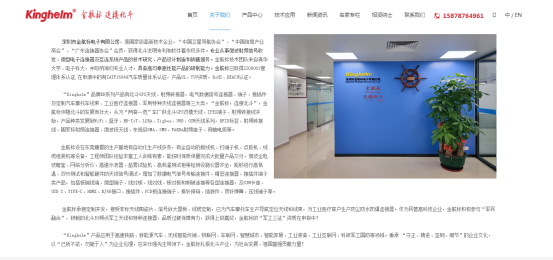
The website of Kinghelm(www.kinghelm.net)
IV. System
For issues on the institutional reform and economic development, which is better or worse? Professor Lin Yifu and Mr. YangXiaokai exchanged their opinions years ago. Yang Xiaokai’s view is that a backward country will have a relatively high economic growth rate at the beginning after utilizing resources and learning from the experience of other countries, but the advantages and continuity of economic development will be difficult to ensure without an effective and in-depth reform of the basic system. For example, the present large-scale corruption and the distribution inequity of social wealth is the result of institutional defects, which is the hidden danger left before. Perhaps because of his early experience, Lin Yifu has always been politically correct. In his opinion, later-developing countries can continue to reform their existing economic and social systems in the process of economic development, and it is not necessary to complete the reform of the system before developing the economy. Time will wait for no one, and the dual-track system can be adopted for reform. China really did well in this respect in the first 40 years of development.
The interesting scenario is that the collision of the two systems and the economic gap create a historical window of opportunity for great development. Shenzhen has seized this golden opportunity to spearhead China's reform and opening up as well as economic prosperity. In terms of economy, Shenzhen has become a bridgehead of the third major industrial transfer, effectively absorbing the technology and resources of Hong Kong, Taiwan and Singapore, improving the soft power of science and technology, finance, education, rule of law, culture, talent, concept and management, and integrating with the most advanced Europe and America.
In terms of system, Shenzhen is the first city in China to enjoy the policy dividend and the pilot of political reform. With independent legislative power, Shenzhen has been stumbling out of the fetters of planned economy. Apart from the domestic population dividend and market dividend, there are a continuous supply of well-trained and inexpensive labor force from the Chinese mainland as well as a vast market, so the comparative advantage of Shenzhen is particularly prominent. Some contemporary economist like Mr. Lu Guoqiang put forward the free market theory, by studying East Asian economies in recent years they made the conclusion , that the economic success is the result of least government intervention. For example, the government has little or no control over prices, foreign trade and foreign exchange. What the government does is to provide a suitable environment for the production and operation of private enterprises and maximize the role of private economy and free market mechanism. This model is also true for Shenzhen.
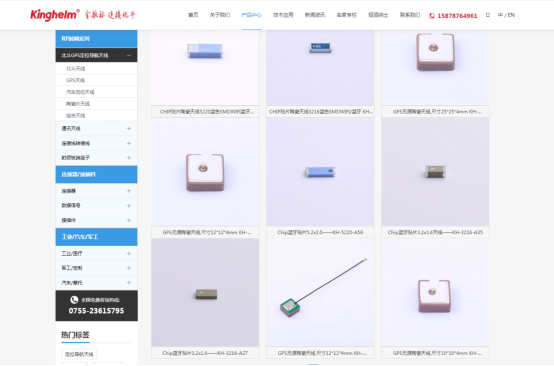
Some ceramic antenna products of Kinghelm(www.kinghelm.net)
V. Finance
The two stock exchanges in Shenzhen and Shanghai have made great contributions to China's economic development. Differ from that of Shanghai, the SME board is a special board set up by Shenzhen Stock Exchange in order to encourage independent innovation. Shenzhen Stock Exchange is seen as China's future "Nasdaq" because of SME’s fast revenue growth, high profitability and technology, as well as their active circulation and trade. With SME, Shenzhen attracts good financial resources , including "headquarters economy",which has a very obvious effect on the local economy.
There are more than 350 listed companies in Shenzhen, about 220 of them are listed domestically and 130 are listed in Hong Kong, the United States and elsewhere. These provide the functions of so called blood transfusion and hematopoiesis for the listed companies in Shenzhen, and prove that the governing level of Shenzhen companies is world-class. Shenzhen is adjacent to Hong Kong, and it's a geographical advantage to construct"Guangdong-Hong Kong-Macao Greater Bay Area". Hong Kong is the world's most dynamic financial centre, Shenzhen has Ping An, China's largest financial group with best performance in China, as well as China Merchants Bank, the most normative domestic bank in management. Together with Hongkong, Shenzhen can quickly develops into a big international financial center competing with London and New York. These will not only strengthen China's international competitiveness, but also introduce more worldwide financial resources for Shenzhen.
Currency is characterized by its good standardization and liquidity, only effective circulation of currency can produce social and economic benefits. Shenzhen does not have such political resources like Beijing, nor innate industrial advantages like Shanghai, but Shenzhen has efficiency and innovation, so Shenzhen’s financial industry will make greater achievements!
It is worth mentioning that the financial industry in Qianhai, Shenzhen is in full swing, and many good policies provided by the state to Qianhai are in line with Hong Kong. According to the ranking of global city finance Index by an international organization, Hong Kong ranks 4th, Shanghai ranks16th, Shenzhen ranks19th and Beijing ranks23rd. If Shenzhen and Hong Kong emerge, they will be more powerful!
VI. Other factors
①Population dividend
Based on the characteristics of Shenzhen, three points of population dividend are analyzed here.
The first is the employment proportion of residents. The employment rate of women in Shenzhen is close to 90% (the employment rate of the whole China is 76%, also it’s the highest in the world). The age and education structure of Shenzhen residents are quite good, and most of them are in the normal working age.
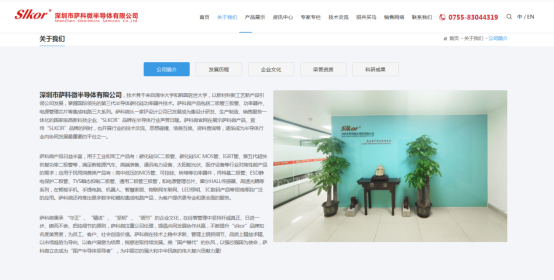
The website of Slkor (www.slkoric.com)
Second, the dependence of employees on work. Most people who come to Shenzhen have nothing to rely on except themselves, so their working initiative and efficiency are very high.
The third is people who come to Shenzhen have a restless heart. Everyone comes to Shenzhen with two hot kidneys to make money, which not only brings Shenzhen infinite imagination space and possibilities, but also becomes the Shenzhen spirit to fight and dare to break through.
②Urban vitality
Shenzhen is the most dynamic city in China. The dual structure of Beijing is basically fixed, people there are too lazy to move and scare to break through. Shanghai's management is too precise, which may damage the efficiency and stifle the creativity, as we can see in stiff Britain. Shenzhen is full of vigor and vitality, with the ambition of embracing the whole world, and put forward the slogan "You are the Shenzhen person once you come here". Shenzhen has a net inflow of 500,000 people a year. According to the historical rules, the vitality and economic growth of cities with increasing migrants are also the fastest, such as Shanghai in the 1930s, Hong Kong and Las Vegas in the 1970s.
Shenzhen's innovation brings vitality, and so does its incentive system. Dr. Zhu Junshan, an expert on Huaqiangbei, said that Shenzhen’s enterprises not only have a good management model, but also have the best distribution mechanism, which is also the incentive mechanism. With a high degree of privatization, the boss is easy to make decisions and flexible in the allocation, which is beneficial to stimulate the enthusiasm of employees. Huawei has paid the highest salary among domestic companies, Tencent’s staff has an average annual salary of 780,000 yuan, in addition, employees and agents of Kinghelm (www.kinghelm.net) and Slkor (www.slkoric.com) hold the equities of the two companies and have the opportunity to participate in the capital feast. These are all in line with the incentive of "surplus value claimants" in economics, which is the same as the "contracted production to households" in China’s rural areas in those days, and it’s a kind of institutional incentive!
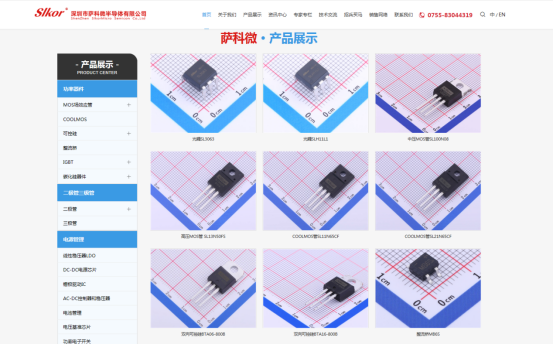
Some products on the website of Slkor (www.slkoric.com)
③Benchmarking demonstration enterprises
Shenzhen's leading enterprises are of great value to social development. Vanke first put forward the concepts of "housing industrialization" and "urban operation", which enabled the real estate industry to find a model and project for rapid development. Huawei is benchmarked against world-class enterprises, and its products are sold all over the world, enabling Chinese enterprises and Chinese people to show themselves on a bigger stage. Therefore, thousands of suppliers in Shenzhen are then in line with the world level. Foxconn has trained a large number of high-quality industrial workers for advanced manufacturing, and also brought advanced concepts and strict management, which has driven the progress of its cooperative companies. China Merchants Bank has brought high quality service and long-term layout awareness to Shenzhen. Besides, the cultural industry of Huaqiang Group has made the animated film "Xiong Da Xiong Er" an honorary citizen of Shenzhen, and the cultural and creative industry has a prospect in Shenzhen.
VII. Weakness
Shenzhen lacks education and medical resources, especially high-quality high-end resources. Shenzhen also lacks long-term strategic visions and topologies, especially some farmer-entrepreneurs. In addition, Shenzhen people also lack feelings and cultural accumulations, and Shenzhen may suffer losses in the future cultural soft power competition. To achieve the great Shenzhen dream, Shenzhen should overcame its weakness in both hard and soft power.
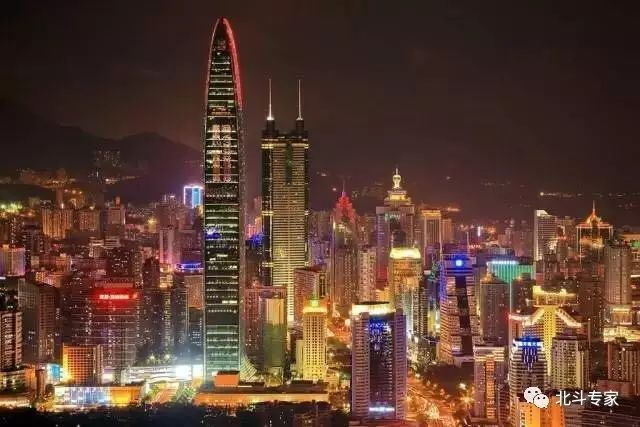
Brief Introduction of Song Shiqiang
Apart from CEO of Shenzhen SlkorMicro and Kinghelm, Mr. Song Shiqiang is currently holds a few important social positions: Private economic researcher of the Economic Development Center of the China State Council, member of the electronic information expert database of China Association for Science and Technology, commercial research expert of Huaqiangbei Alliance.
Prior to invest and to manage Shenzhen SlkorMicro Semicon Co., Ltd. and Shenzhen Kinghelm Electronics Co., Ltd., Mr. Song was the former CEO of an international real estate listed company.
Mr. Song is working hard on building the Slkor and Kinghelm brands. Both Slkor and Kinghel are Chinese national high-tech companies and have obtained dozens of invention patents and software copyrights. Slkor is one of the fastest-growing semiconductor companies in China, and its vision is to become the leader of the domestic semiconductor industry.
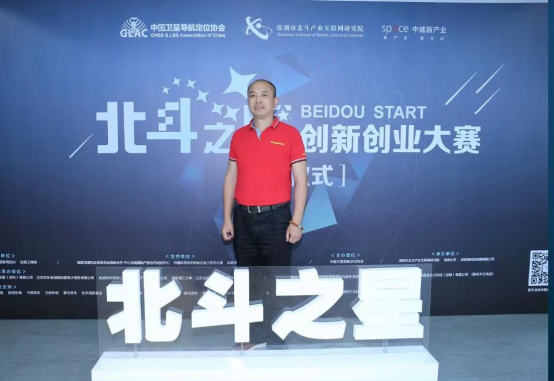
"Kinghelm Connecting Beidou" is the slogan of Kinghelm company. Starts from the development of Beidou antenna, Kinghelm has now developed and produced microwave antenna, RF cables and electrical signal connector and other products, embracing the intelligent era for Internet of Everything. Mr. Song has a wide reputation and influence in the Chinese semiconductor, Beidou positioning and navigation industry. As one of the renowned business leaders in Huaqiangbei Commercial Area of Shenzhen, Mr. Song is paying his best efforts to improve the business environment, hoping that Huaqiangbei will become a catalyst for reform and opening of Shenzhen economic development.
Mr. Song Shiqiang's recent article“A Study of Huaqiangbei”, has beenreposted by Xinhua News Agency, People's Daily, Yangcheng Evening News and China Economic Daily, and its English version "Song Shiqiang's Point of View on Shenzhen Huaqiangbei" was reposted by more than 200 overseas media, including the Associated Press and the Wall Street Journal, which contributes to promote Shenzhen and Huaqiangbei.








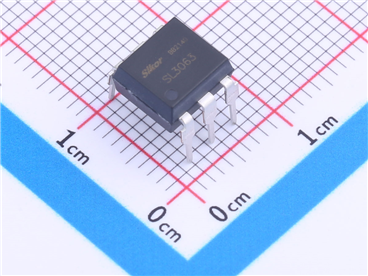
Site Map | 萨科微 | 金航标 | Slkor | Kinghelm
RU | FR | DE | IT | ES | PT | JA | KO | AR | TR | TH | MS | VI | MG | FA | ZH-TW | HR | BG | SD| GD | SN | SM | PS | LB | KY | KU | HAW | CO | AM | UZ | TG | SU | ST | ML | KK | NY | ZU | YO | TE | TA | SO| PA| NE | MN | MI | LA | LO | KM | KN
| JW | IG | HMN | HA | EO | CEB | BS | BN | UR | HT | KA | EU | AZ | HY | YI |MK | IS | BE | CY | GA | SW | SV | AF | FA | TR | TH | MT | HU | GL | ET | NL | DA | CS | FI | EL | HI | NO | PL | RO | CA | TL | IW | LV | ID | LT | SR | SQ | SL | UK
Copyright ©2015-2025 Shenzhen Slkor Micro Semicon Co., Ltd